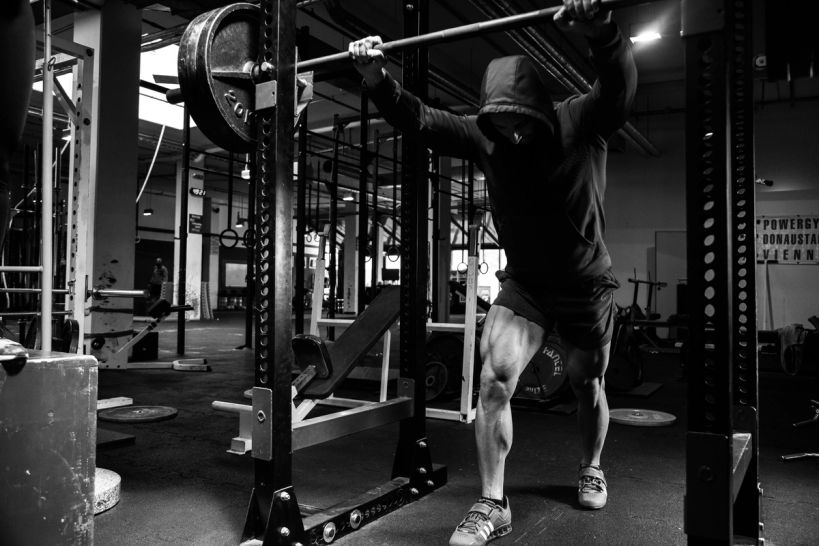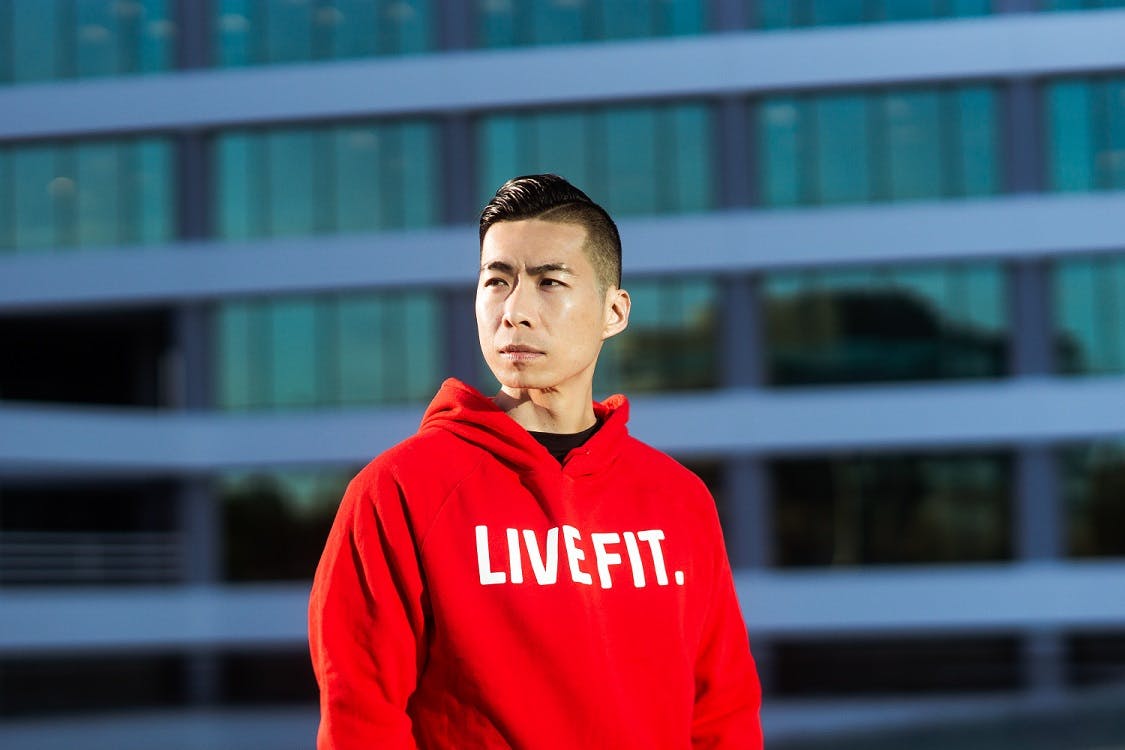How To Get Rid Of Skinny Fat | Bulk or Cut?
Introduction
The Struggle of Skinny Fat: To Bulk or Cut?
We live in a world obsessed with body image, where the pursuit of the perfect physique has become a common goal for many. However, there is a unique and often misunderstood category of individuals known as "skinny fat." So, what exactly does it mean to be skinny fat? In simple terms, being skinny fat refers to having a body composition that appears thin on the outside but carries excess body fat and lacks muscle tone underneath. These individuals may look slim when clothed, but once disrobed, they are confronted with soft areas and lack of muscle definition. This perplexing condition often leads those affected by it to face an ongoing dilemma: should they focus on gaining muscle mass through bulking or cut down on body fat through cutting? The answer is not black and white as various factors need consideration before embarking on either path. Before we delve deeper into this conundrum, let's first clarify what exactly constitutes being skinny fat.
Definition of Skinny Fat
Skinny fat is characterized by having a high percentage of body fat relative to lean muscle mass. It primarily affects individuals who may appear thin or petite but have insufficient muscle development and excess adipose tissue. This imbalance can lead to an overall lack of physical strength and poor metabolic health. Due to their naturally slimmer frames and relatively low weight compared to their height, these individuals may have mistakenly believed that they were in good shape. However, upon closer examination, one can notice the presence of stubborn pockets of fat around certain areas like the abdomen, hips, thighs, or arms. The reality is that skinny-fat individuals often have higher levels of visceral adipose tissue (VAT), which surrounds internal organs and poses a higher risk of developing various health problems. These may include cardiovascular diseases, insulin resistance, type 2 diabetes, and metabolic syndrome. Now that we have a clearer understanding of what it means to be skinny fat, let's explore the challenging decision between bulking or cutting.
The Dilemma: Bulk or Cut?
For those aiming to transform their skinny fat physique into a more defined and healthier shape, deciding whether to bulk (gain muscle mass) or cut (reduce body fat) can be an agonizing decision. Each approach comes with its own set of benefits and considerations that need careful evaluation. The primary question is: what is your ultimate goal? Do you aspire to increase muscle size and strength or prioritize reducing body fat levels? Your desired outcome will guide you in determining the most appropriate path to embark on. Another factor worth considering is your current body composition. Are you visibly lacking muscle mass but have a moderate amount of body fat? Or are you already carrying substantial muscle but need to shed excess layers of fat for better definition? Last but not least, one must also take into account lifestyle factors such as time commitment, dietary preferences, and overall mental readiness for the chosen path. These factors play a crucial role in maintaining long-term adherence and achieving sustainable results. In the following sections, we will explore each option in detail – bulking and cutting – weighing the pros and cons associated with each approach. By gaining an understanding of these two routes, we hope to provide clarity on which path may lead towards your desired transformation from being skinny fat.
Understanding the Skinny Fat Phenomenon
What causes skinny fat?
Like many things in life, the phenomenon of being skinny fat is not easily explained by a single factor. It often results from a combination of poor diet, lack of exercise, and genetics. One common cause is a sedentary lifestyle, where individuals spend long hours sitting or engaging in low-intensity activities. This leads to muscle atrophy and an increase in body fat percentage. In terms of diet, consuming excessive amounts of processed foods high in sugar and unhealthy fats can contribute to the development of a skinny fat physique. These foods lack essential nutrients needed for muscle growth and promote fat storage instead. Additionally, insufficient protein intake may hinder muscle development. Genetics also play a role: Some individuals naturally have slower metabolisms or store more body fat around their midsection, making it easier for them to become skinny fat.
Body composition and metabolism
The concept of body composition refers to the proportion of lean muscle mass versus body fat mass in an individual's body. For skinny fat individuals, this balance is skewed towards higher levels of body fat compared to muscle mass. Metabolism: Another crucial aspect influencing the development of skinny fat physiques is metabolism. Metabolism determines how efficiently our bodies burn calories and use energy. Skinny fat individuals often have slower metabolisms due to factors such as age, genetics or chronic calorie restriction diets which may lead to metabolic adaptations.
Health risks associated with skinny fat
Skinny fat might sound like a harmless term, but it's important to recognize the potential health risks involved. Excess body fat, even if individuals appear thin, can lead to various health issues. Skinny fat individuals are at an increased risk of developing conditions like type 2 diabetes, heart disease due to high cholesterol levels and blood pressure, and metabolic syndrome. Moreover, the lack of muscle mass in skinny fat individuals can contribute to weaker bones and decreased overall strength. This may make them more prone to fractures and injuries.
Assessing Your Goals and Priorities
Defining your desired physique
When embarking on a journey to get rid of skinny fat, it's crucial to have a clear vision of the physique you desire. Take some time to reflect on what you want your body to look like. Do you aspire to have well-defined abs, toned arms, or a sculpted back? Visualize yourself in the mirror and imagine the changes you wish to see. By defining your desired physique, you set a specific target to work towards.
Identifying personal fitness goals
Beyond just appearance, it's essential to identify personal fitness goals that go hand-in-hand with your desired physique. Consider what activities or sports interest you—perhaps building strength for weightlifting or improving endurance for long-distance running. Setting achievable fitness goals will not only keep you motivated but also help tailor your training regimen accordingly. For example, if your aim is overall strength and muscle development, incorporating resistance training into your routine will be crucial. On the other hand, if improving cardiovascular health is a priority for you, including more cardio exercises like running or cycling would be beneficial.
Considering lifestyle factors
While striving towards a fitter body is admirable, it's important not to neglect other aspects of life that can influence your journey. Consider lifestyle factors such as work commitments, family responsibilities, and social life when planning your approach. If you have limited time due to a busy work schedule or family obligations, choosing an exercise routine that fits into short bursts of time might be more realistic than attempting longer workout sessions. Additionally, considering whether restrictive diets align with your social life can help prevent feelings of isolation or deprivation that may hinder long-term success. Finding balance between pursuing fitness goals and maintaining overall well-being is crucial for sustainable progress. It's essential to create a plan that considers your individual circumstances and allows for flexibility, ensuring that you can stick to it in the long run. By taking the time to assess your goals, desired physique, personal fitness objectives, and lifestyle factors, you lay a solid foundation for success. Building a roadmap tailored to your unique circumstances will help you navigate the journey ahead with clarity and determination. Remember that this process is highly personal and should be driven by what makes you happy and fulfilled. Stay true to yourself throughout your transformation journey, keeping in mind that progress takes time and dedication. Embrace the process, celebrate small victories along the way, and stay focused on becoming the best version of yourself.
Bulk or Cut: Exploring the Options
Bulking explained:
Bulking is a popular approach taken by individuals looking to get rid of the skinny fat physique. It involves consuming a caloric surplus, which means you consume more calories than your body needs for maintenance. The surplus plays a crucial role in promoting muscle gain. When you provide your body with excess calories, it has the fuel it needs to build new muscle tissue. In addition to a caloric surplus, resistance training is an essential component of successful bulking. By lifting weights and engaging in strength training exercises, you stimulate muscle hypertrophy - the process of increasing the size and volume of your muscles. Compound exercises like squats, deadlifts, bench presses, and pull-ups are particularly effective in targeting multiple muscle groups simultaneously. Proper nutrition plays a vital role in bulking effectively. Focus on consuming adequate protein to support muscle growth and repair. Aim for around 1 gram of protein per pound of body weight daily. Additionally, include complex carbohydrates like whole grains, fruits, and vegetables to provide sustained energy during workouts and support overall health. Healthy fats from sources like nuts, avocados, and olive oil should also be included in your diet.
Cutting explained:
Cutting refers to the process of reducing body fat while maintaining or preserving lean muscle mass. To achieve this goal, one must create a caloric deficit by consuming fewer calories than their body requires for maintenance. This prompts the body to tap into its fat stores for energy. While cutting focuses on fat loss rather than building substantial amounts of new muscle mass like bulking does, incorporating cardiovascular exercises is beneficial for calorie burning during this phase. Activities such as running, cycling, swimming or HIIT (High-Intensity Interval Training) can help increase calorie expenditure and promote overall fat burning. Alongside regular workouts, nutrition plays a crucial role in cutting effectively. It is important to focus on consuming nutrient-dense, low-calorie foods. Prioritize lean protein sources like chicken, fish, tofu, and legumes to maintain muscle mass while supporting fat loss. Incorporate plenty of fibrous vegetables and whole grains to provide satiety and essential vitamins and minerals. To further enhance fat burning during a cut, consider incorporating intermittent fasting or time-restricted eating patterns. This approach involves restricting the eating window within a specific timeframe each day, which can help control calorie intake and optimize metabolism for efficient fat utilization. Achieving your desired physique requires careful consideration of whether bulking or cutting is the right approach for you. Evaluate your goals, body composition, and personal preferences before deciding which path to take. Remember that both bulking and cutting have their own benefits and challenges - finding the right balance between muscle gain and fat loss will ultimately lead to a successful transformation journey towards getting rid of the skinny fat physique.
Deciding Between Bulking or Cutting
Evaluating Body Composition: Measuring Body Fat Percentage
When it comes to transforming your skinny fat physique, understanding your body composition is crucial. One of the key factors to consider is your body fat percentage. Measuring your body fat percentage can provide valuable insight into how much of your weight is comprised of fat versus muscle. There are several methods you can use to measure body fat percentage. One common approach is using skinfold calipers, which involves pinching the skin in different areas and measuring the thickness of the fold. Another option is bioelectrical impedance analysis (BIA), which utilizes a special scale or handheld device that sends a small electrical current through your body to estimate your body composition. While these methods may not provide 100% accuracy, they offer a good starting point for understanding where you stand in terms of body fat levels. Remember that ideal body fat percentages vary depending on gender and age, so it's essential to consult reliable sources or seek professional guidance when interpreting your results.
Evaluating Body Composition: Assessing Muscle Mass
Alongside evaluating body fat percentage, assessing muscle mass plays a pivotal role in determining whether bulking or cutting is the best approach for you. Having an idea of how much muscle mass you currently possess will help guide your decision-making process. To assess muscle mass accurately, you can turn to methods such as dual-energy X-ray absorptiometry (DEXA) scans or using specialized devices like handheld bioelectrical impedance analyzers that also estimate muscle mass. These techniques go beyond simply measuring weight and can provide an accurate breakdown of lean tissue versus fat. Understanding your muscle mass is vital because if you have an adequate amount already, focusing on cutting might be more beneficial than bulking. On the other hand, if you lack significant lean muscle tissue, embarking on a bulking phase might be the key to achieving a more toned and sculpted physique.
Considering Personal Preferences: Mental Readiness for Bulking or Cutting
Beyond evaluating physical aspects, it's important to consider your mental readiness for embarking on either a bulking or cutting journey. Each approach comes with its own set of challenges and requires discipline, patience, and consistency. Bulking involves consuming surplus calories, which can be mentally challenging for some individuals who struggle with the fear of gaining excessive fat. On the other hand, cutting requires maintaining a caloric deficit over an extended period, which can test one's willpower and commitment to sticking with a reduced intake. Take some time to reflect on your mindset and determine whether you feel mentally prepared for either scenario. Consider your relationship with food, your ability to adhere to specific dietary guidelines, and how comfortable you are with potential fluctuations in body weight.
Considering Personal Preferences: Long-Term Commitment to the Chosen Approach
Another crucial aspect when deciding between bulking or cutting is assessing your long-term commitment. Both processes take time—there are no quick fixes here. It's essential to choose an approach that aligns with your lifestyle and that you can sustain in the long run. If you opt for bulking, keep in mind that building muscle mass is a gradual process that typically spans several months or even years. Consistency in training and nutrition is key during this phase. Conversely, cutting involves gradually reducing body fat percentage while preserving muscle mass—a process that also requires dedication over an extended period. Consider factors such as work commitments, social obligations, and personal preferences when determining which approach best fits into your lifestyle. Remember that sustainability is critical; choose an approach that not only helps you achieve your goals but also allows you to maintain them in the long term without feeling overwhelmed or deprived. Ultimately, deciding whether to bulk or cut depends on your unique body composition, personal preferences, and long-term commitment. Carefully evaluating these factors will help you make an informed choice that sets you on the path to transforming your skinny fat physique into one that brings you confidence and vitality. So take the time to assess where you currently stand and envision the version of yourself that you strive to become.
Alternative Approaches to Skinny Fat Transformation
Recomposition Strategy: Simultaneous Muscle Gain and Fat Loss
When confronted with the dilemma of whether to bulk or cut, some individuals find themselves more inclined towards a middle-ground approach known as recomposition. This strategy focuses on simultaneously building muscle while shedding fat, ultimately leading to a more toned and defined physique. The key here is striking the right balance between caloric intake and expenditure. To achieve simultaneous muscle gain and fat loss, it's essential to maintain a slight caloric deficit while consuming adequate protein to support muscle growth. Aim for a protein intake of around 1 gram per pound of body weight. This ensures that your muscles have the necessary building blocks for growth while still allowing your body to tap into fat stores for energy. In terms of training, incorporating progressive resistance training techniques is vital during recomposition. This entails gradually increasing weights and intensity over time, challenging your muscles to adapt and grow stronger. Focus on compound exercises such as squats, deadlifts, bench presses, and pull-ups that engage multiple muscle groups simultaneously.
Maintenance Phase: Stabilizing Body Composition Before Deciding on Bulking or Cutting
Sometimes it can be difficult to decide between bulking or cutting right away. In such cases, embarking on a maintenance phase could be beneficial. The primary aim of this phase is to stabilize your body composition by maintaining both muscle mass and body fat levels before committing fully to either bulking or cutting. During the maintenance phase, shift your focus towards maintaining strength gains rather than pushing for maximum hypertrophy or significant fat loss. By doing so, you allow your body time to adjust and adapt after previous training phases. It's important during this phase not to become complacent with your diet but rather aim for balanced nutrition that sustains your current physique without causing significant fluctuations in weight. This means consuming enough protein, healthy fats, and carbohydrates to support muscle maintenance and overall energy levels. While in the maintenance phase, it's a great opportunity to diversify your training routine. Incorporate different fitness modalities such as yoga, Pilates, or sports activities that promote overall fitness and enhance your muscular coordination.
Conclusion
Recomposition and the maintenance phase offer alternative approaches for addressing the skinny fat dilemma. Whether you choose to simultaneously build muscle while losing fat or stabilize body composition before committing to a specific goal, both strategies require dedication and consistency. Remember, there is no one-size-fits-all solution when it comes to transforming your physique. It's crucial to evaluate your personal preferences, lifestyle factors, and long-term goals before deciding which approach suits you best. Ultimately, understanding that achieving a fit and healthy body is a journey rather than an overnight transformation will allow you to make informed choices. Embrace the process, stay committed to your goals, seek professional guidance if needed, and celebrate each milestone along the way. With perseverance and determination, you can conquer the skinny fat challenge and sculpt a physique that reflects your inner strength.
Supporting Your Transformation Journey
Smart Supplementation Choices: Protein Powders, Creatine, and Other Supplements
Supplements can be a valuable addition to your skinny fat transformation journey. When it comes to addressing both muscle gain and fat loss, protein powders are a popular choice. They provide a convenient and efficient way to increase your daily protein intake, which is essential for muscle recovery and growth. Look for high-quality whey or plant-based protein powders that suit your dietary preferences. Another supplement worth considering is creatine. Known for its ability to increase strength and muscle endurance, creatine can be particularly beneficial during resistance training. It aids in boosting the production of ATP (adenosine triphosphate), the energy currency of our muscles, allowing you to push harder during workouts. Keep in mind that while supplements can support your efforts, they should not replace a well-balanced diet. Prioritize whole foods rich in lean proteins, complex carbohydrates, healthy fats, and plenty of fruits and vegetables.
Conclusion
Embarking on the journey to get rid of skinny fat can be both challenging and rewarding. Whether you choose to bulk or cut depends on various factors such as personal goals, body composition analysis, and lifestyle considerations. Remember that there are no one-size-fits-all approaches – what works for someone else may not work for you. Stay committed to your chosen path but remain flexible enough to make adjustments along the way if needed. Take advantage of progressive resistance training techniques and consider supplementing with protein powders or creatine if appropriate for your goals. Ultimately, improving body composition takes time and consistency. Embrace the process rather than obsessing over instant results; trust that with dedication and perseverance, positive changes will come. Celebrate every small victory along the way – whether it's increased strength during workouts or noticeable improvements in physique. Remember, you have the power to reshape your body and achieve the transformation you desire. Stay focused, stay motivated, and believe in yourself. Embrace this journey as an opportunity for growth, both physically and mentally. Soon enough, you'll be proud of how far you've come on your quest to banish skinny fat for good!
About The Author


Get your macronutrients breakdown
Fill out the form below to get a preview of your recommended daily calorie and macronutrient breakdown.

Why I Stopped Gaining Muscle (The Honest Truth)
Why I Stopped Gaining Muscle (The Honest Truth) The Importance of Gaining Muscle When it comes to health and fitness, gaining muscle holds a signifi...

Reverse Diet To Lean Bulk - Macros Included
Reverse Diet To Lean Bulk - Macros Included Introduction to Reverse Dieting Welcome, fitness enthusiasts! Today, we embark on an exciting journey in...



